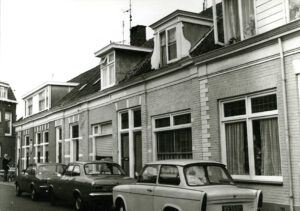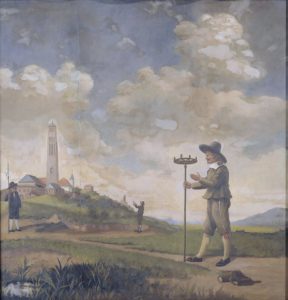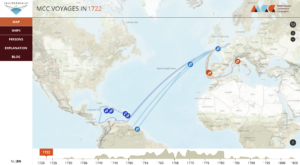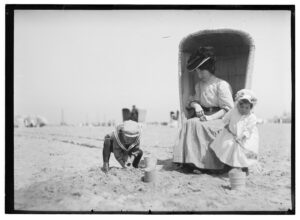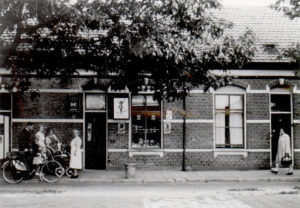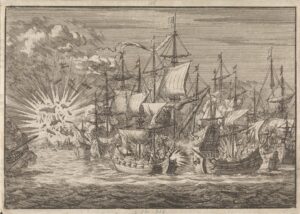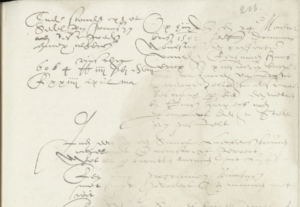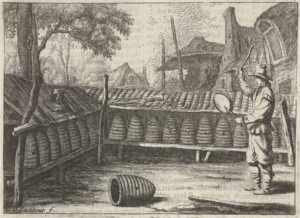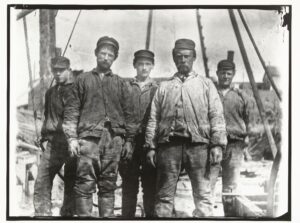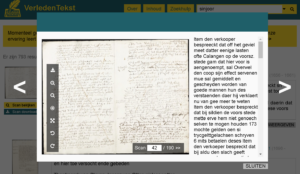Not all information that is kept in Dutch archives is available via national websites like WieWasWie or Open Archives. You can check the map of archives in the Netherlands to see where the records are kept for the place where your ancestors lived. Often, the websites of the archives will have additional information. This can include images of the towns, finding aids with scans of unindexed records, or newspapers. You may even be able to find photos of the streets where your ancestors lived. … [Read more...]
Dutch term – Duim, voet, roede
These are three measures of length that were in use until the implementation of the metric system during the French occupation (1795-1813). Duim (thumb): about 2.5 cm/1" Voet (foot): about 30 cm, about 11.8" Roede (rod): around 3.6-4 meters (11'10"-13'1.5"). The exact size depended on the time and place. In general there were 12 duimen in a voet and 12 voeten in a roede, but a roede could have as many as 20 voeten. … [Read more...]
Dutch Genealogy News for June 2023
Here is an overview of all the new sources, projects, websites and other news announced last month. Sources Residence cards of Voorburg 1922-1939 have been indexed and can be consulted at the Haags Gemeentearchief website. These cards list the residents per address. Several church records from the east of North Brabant have been added to the BHIC website. The photo collection of Johan van Eerd is now available via the BHIC website. These include photos from the 1930s-1970s, including … [Read more...]
Dutch term – Strand
The strand is the beach. At the start of the twentieth century, tourism began to flourish. The beach became a popular destination for richer people. … [Read more...]
Quick Tip – Did the boundaries change?
Over the past two hundred years, Dutch municipalities have seen many boundary changes. In the past 50 years especially, many smaller municipalities have merged to form larger municipalities. Understanding these boundary changes can help you figure out if your ancestor moved, or if they continued to live in the same place but the municipality changed. For an overview of all municipalities in the Netherlands since 1811 including boundary changes, see the website Gemeentegeschiedenis. Example: … [Read more...]
Dutch term – Kaapvaart
Kaapvaart means privateering. Kaapvaart was a form of legal piracy in war time. The government would recruit private ships as part of the war effort by giving the captain a license to attack the enemy and steal from them. The proceeds were shared between the privateer and the government. … [Read more...]
How I use AI in my work
Last week, I wrote a post about using handwritten text recognition software to automatically transcribe records. Several people have asked me if and how I use AI for my business, so I thought I would clarify. Handwritten text recognition technology I use handwritten text recognition technology for my personal research and client projects. For one client, Roberta Estes of DNA Explained, I traced a line back to Harlingen, Friesland in the early 1600s. There were earlier records available, but … [Read more...]
Dutch term – Imker
An imker is a beekeeper. It is rare to find imker as an occupation in Dutch records since few people kept bees as their main income stream. I have found beehives (bijenkorven) tallied in estate inventories of some of my ancestors who owned farms, which told me they kept bees. The number of hives suggested they were not just for personal use, so they probably sold honey on local markets. You can find estate inventories in notarial records. … [Read more...]
Ask Yvette – Difference between arbeider, werkman, dagloner
A reader asked me what the difference is between the occupations arbeider, werkman, and dagloner. Arbeider and werkman are synonyms and both mean "laborer." These are usually people who work for an employer for a longer period of time, typically a year, in return for an annual wage. A dagloner is a day laborer, somebody who does not have a fixed employer but is hired and paid per day. All these occupations perform manual labor, typically unskilled, for an employer. Laborers were usually … [Read more...]
Using AI for Transcriptions: VerledenTekst
My friend Willem Vermeulen and I have been playing around with AI the past few weeks to try software for handwritten text recognition. We've been using it to transcribe records of Oosterhout in Noord-Brabant, where we both have ancestors. Short version: it is a game-changer and will forever change how I do genealogy. Loghi The software we used is Loghi, Linux-based software developed by the KNAW (royal Dutch academy for sciences) in collaboration with the National Archives. It is available … [Read more...]
